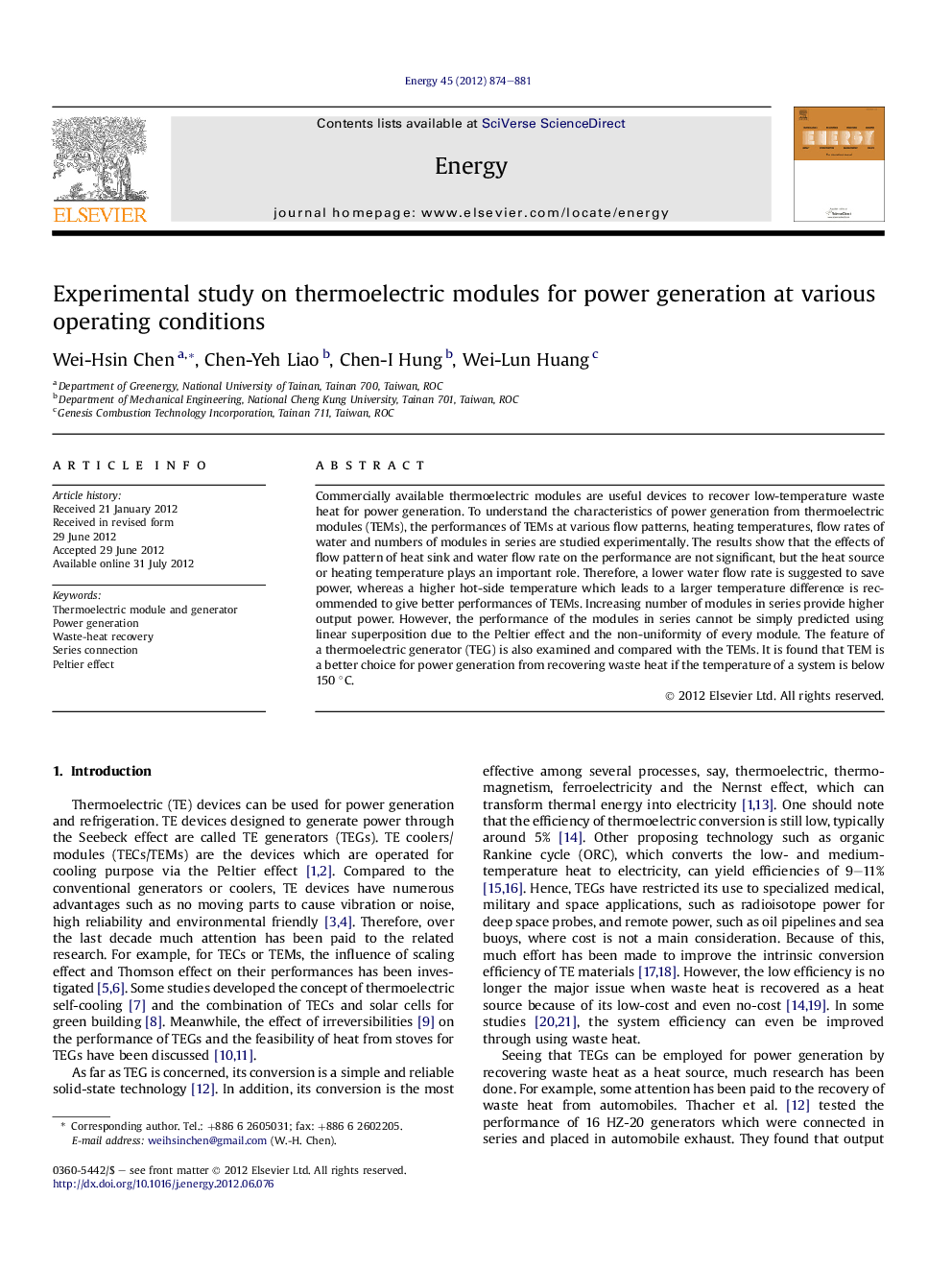| Article ID | Journal | Published Year | Pages | File Type |
|---|---|---|---|---|
| 1733734 | Energy | 2012 | 8 Pages |
Commercially available thermoelectric modules are useful devices to recover low-temperature waste heat for power generation. To understand the characteristics of power generation from thermoelectric modules (TEMs), the performances of TEMs at various flow patterns, heating temperatures, flow rates of water and numbers of modules in series are studied experimentally. The results show that the effects of flow pattern of heat sink and water flow rate on the performance are not significant, but the heat source or heating temperature plays an important role. Therefore, a lower water flow rate is suggested to save power, whereas a higher hot-side temperature which leads to a larger temperature difference is recommended to give better performances of TEMs. Increasing number of modules in series provide higher output power. However, the performance of the modules in series cannot be simply predicted using linear superposition due to the Peltier effect and the non-uniformity of every module. The feature of a thermoelectric generator (TEG) is also examined and compared with the TEMs. It is found that TEM is a better choice for power generation from recovering waste heat if the temperature of a system is below 150 °C.
► The performances of thermoelectric models at various operating conditions are studied. ► Effects of flow pattern of heat sink and water flow rate on performance are not significant. ► The heat source or heating temperature plays an important role on the performance. ► The performance of the modules in series cannot be simply predicted using linear superposition. ► Thermoelectric module is a better choice than generator for power generation if temperature is below 150 °C.
